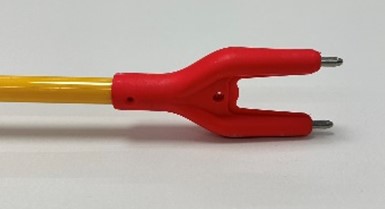What is behind the high world prices for beef?

Many countries around the world are currently experiencing high prices for cattle or beef due to a combination of local and international factors, namely limited supplies and strong EXPORT demand. Let's analyze the situation in more detail.
Supply restrictions in Brazil and Australia
Suppressed supply and strong export demand contributed to marked inflation in Brazilian cattle prices, with steers up more than 70% year-over-year in DOLLAR terms in the first week of May.
Cattle slaughter in Brazil is now below last year's levels, with total slaughter in the first quarter of 2021 down 12% year on year, according to MEAT and Livestock Australia. Irregular rainfall in 2020 hampered grass growth and pasture quality, subsequently delaying livestock grazing. Strong export demand from CHINA helps support Brazilian prices; in the first quarter of 2021, shipments increased by 31% compared to the same period last year.
Demand for protein in China continues to influence global beef markets. Beef prices in China have risen steadily for some time, initially due to ASF, which reduced pork production and led consumers to switch to other proteins. Then covid-19 caused disruptions in meat processing, but demand for beef remained strong, boosting demand for imports. In 2020, Chinese imports of fresh and frozen beef rose 28% year on year, increasing another 20% year on year in the first quarter of 2021.
Australia reportedly recorded the smallest herd of cattle in over 30 years due to drought and the subsequent decline in herds. After more favorable conditions in 2020, many producers are now replenishing their herds, causing increased competition for available animal stocks and rising livestock prices. Lower inventories also contributed to a 22% year-over-year decline in Australian beef exports in January-March 2021.
And this fact will be taken into account when preparing the monthly analytical report Meatinfo.ru
Europe
Although exports are not large globally, shipments from Europe are also lower than in previous years, due to the reduction in the number of dairy cows and heifers. This will generally support the rise in cattle prices in Europe; now the average price of R3 cattle in the EU has increased by 12% year on year.
Demand drives prices in the US and Argentina
While high Brazilian and Australian prices were largely supply-driven, the rise in prices in the US was on the other side. Wholesale U.S. beef prices have risen markedly over the past few weeks due to increased demand from retailers, the reopening of catering establishments, and rising exports (mainly to China ). In April, average wholesale beef prices were 5% higher year-over-year and 19% higher than 2019 (pre-Covid).
However, despite some increases in U.S. cattle prices, processing capacity is reported to be limiting growth at the farm gate. Reports show that US cattle supplies are plentiful, but processors have been running at full capacity for some time, unable to increase slaughter rates to meet demand.
Argentina recently imposed a 30-day ban on beef exports to try to contain domestic price increases, driven in large part by strong demand in Asia (China). This could further limit global supply as more products could potentially flow into China from other places as compensation. Argentina is the second largest supplier of beef to China after Brazil.
Read together with it:
- Парагвай: Экспорт субпродуктов является растущей отраслью и уже достиг 95,4 млн долларов СШАЭкспорт говяжьих субпродуктов в этом году значительно вырос. К концу августа выручка составила 95,4 млн долларов США по сравнению с 54,6 млн долларов США на тот же конец прошлого года. По данным SENACSA, в конце августа этого года было экспортировано 51 миллион килограммов мяса по сравнению с 33,7 миллиона килограммов на конец того же месяца прошлого года. Экспорт субпродуктов увеличился на 51,3%....
- Новые горизонты сотрудничества: Россия и Аргентина обсуждают совместный доступ на рынки продукции животного происхожденияОдной из ключевых тем конференции стал контроль за производством ветеринарных препаратов в Аргентине. Аргентинская сторона представила свою систему контроля, включающую Управление ветеринарных продуктов и Управление лабораторий животных. Эти организации обеспечивают высокие стандарты безопасности, так как каждая производственная единица подвергается проверкам каждые 3-5 лет и зарегистрирована в ин...
- Министерство сельского хозяйства США представило план по снижению цен на говядинуПоголовье скота в стране находится на самом низком уровне за последние 75 лет, в то время как спрос на говядину вырос на 9% за последнее десятилетие. Поскольку увеличение поголовья скота в стране требует времени, Министерство сельского хозяйства США (USDA) уже сейчас инвестирует средства, чтобы сделать эти рынки менее волатильными для скотоводов в долгосрочной перспективе и более доступными для по...
- С января по июль экспорт свинины из ЕС вырос на 1,6%На втором месте оказались Нидерланды с объёмом экспорта в 392 000 тонн. Дания экспортировала свинину в третьи страны с объёмом в 308 000 тонн, что примерно на 13% меньше, чем в предыдущем году. Германия экспортировала 180 000 тонн, что на 18% меньше, чем годом ранее. Это было обусловлено, главным образом, дополнительными ограничениями на экспорт, вызванными вспышкой ящура в начале года. Помимо зап...
- Московская область планирует нарастить мясное производство на 25% к 2030 годуВ Московской области более 100 предприятий уже выпускают около 305,000 тонн мяса, из которых значительная доля поступает от 19 ведущих производителей свинины и мяса птицы. Также в регионе реализуются два новых инвестиционных проекта: в Можайске строится утиная ферма на 125,000 птиц, а в Ступино — овцеводческое хозяйство на 11......
- В Кремле пообещали ответ на санкции сообразно интересам РоссииДмитрий Песков В Кремле начали анализировать введенные санкции для разработки ответных мер, заявил пресс-секретарь президента России Дмитрий Песков, передает корреспондент РБК. «В настоящий момент анализируются те санкции, которые определены. Будем делать то, что наилучшим образом соответствует нашим интересам», — сообщил Песков, отвечая на вопрос об ответных мерах России. 19-й пакет санкции Еврос...
- Zakharova promised "tough steps" in response to the 19th EU sanctions package.Maria Zakharova RUSSIA will respond harshly to the latest round of EU sanctions, Russian Foreign Ministry spokesperson Maria Zakharova stated on TELEGRAM . The EU previously adopted the 19th package of anti-Russian sanctions, which included a ban on the import of Russian LNG, new restrictions on oil companies, ships, banks, and the EXPORT of certain goods, as well as restrictions on the movement o...





























































